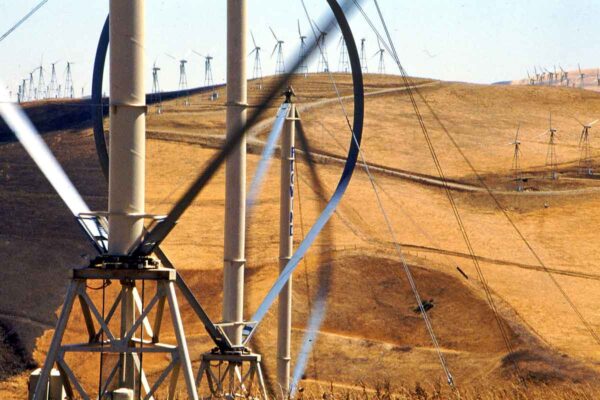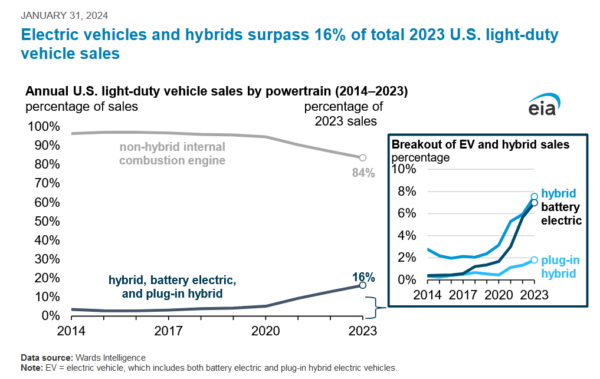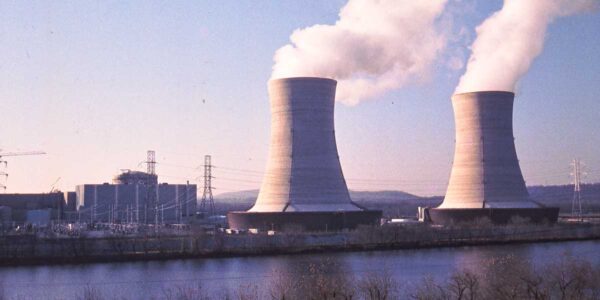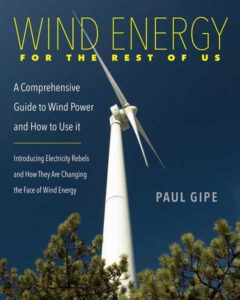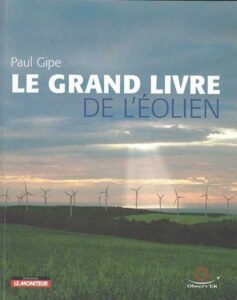Paul Gipe
is an author, advocate, and analyst of the renewable energy industry. He has written extensively about the subject for the past four decades, receiving numerous awards for his efforts. Gipe has lectured before groups from Patagonia to Puglia, from Tasmania to Toronto, and from Halifax to Husum. He has spoken to audiences as large as 10,000 and as small as a private presentation for Vice President Al Gore. Gipe is well known for his frank appraisal of the promise and pitfalls of wind energy, including his stinging critiques of Internet wonders and the hustlers and charlatans who promote them. He led the campaign to adapt electricity feed laws to the North American market–the same policy that has stirred a renewable energy revolution in Germany.
Latest Articles by Paul Gipe
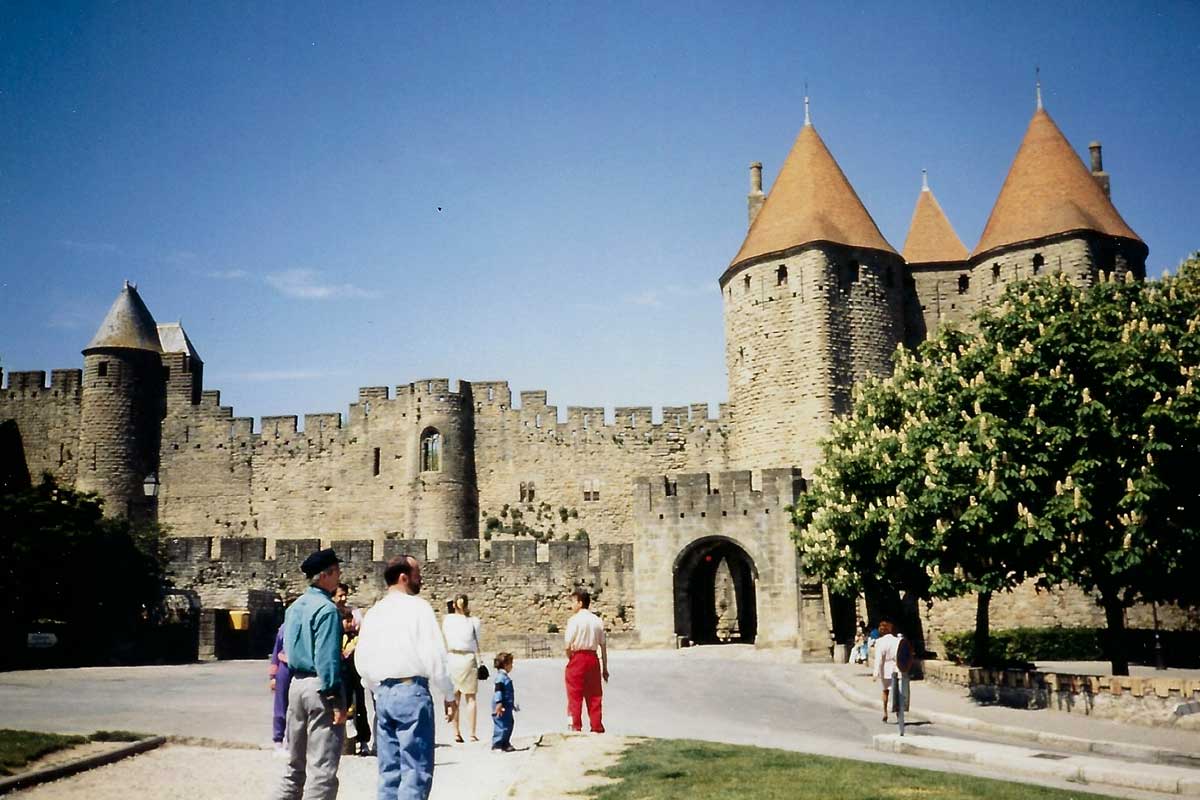
By
Paul Gipe
Famous Fortified French Village Proposes a Wind Turbine to Power its EVs. . . in 1946!
My historical journey into the deep recesses of wind energy took another odd twist yesterday. I was updating my bibliographic entry for a 1946 conference on wind energy in France when I stumbled over this tidbit about electric vehicles.[1] For many in the wind community this may be doubly surprising. …
Because of my critical articles on Vertical-Axis Wind Turbines, Wind Harvest’s Kevin Wolf contacted me with background on what failed in the industry’s mostly widely deployed Darrieus wind turbine: FloWind. In the history of wind energy, no company was more successful in deploying Darrieus or “eggbeater” wind turbines than FloWind. …
In January 2024 Bloomberg generated a lot of media buzz when it announced that sales of gasoline-powered vehicles peaked in 2017. “With 2022 data now available, BNEF is confident the global market for internal combustion vehicles peaked in 2017 and is now in structural decline.” (Unfortunately, the full report is …
In mid March Nancy and I saddled up our Bolt EV and headed out to the Carrizo Plains National Monument for another dirt-road adventure in search of wildflower displays. Nancy loves photographing wildflowers and we both long for the vast expanses of open space that the Carrizo Plains offers. To …
Tony Swan was a rock. He was someone you could always lean on. You could depend on him. If he said you could do it, you could do it, despite your own doubts. Tony exuded confidence. On the trail, I never doubted his judgment. He got me places I’d have …
Other Articles
And thus the tragic legacy of Sam Randazzo and his push to keep Perry and Davis-Besse corruptly on line comes full circle. The biggest bribery scandal in Ohio history skates along the edge of an apocalypse made virtually certain by prolonging operations at two incredibly dangerous money sucking dinosaur nukes, and their 92 dying siblings around the US, 400+ worldwide. We mourn Sam’s passing. We pray his corrupt atomic legacy does not kill the rest of us.
In this post, I crunch through all the data on the carbon footprint of EVs compared to conventional fossil cars. The summary is that, yes, EVs emit less – often one-half to two-thirds less over their lifetime. EVs still emit less when the battery is produced in countries that rely heavily on coal. And, this is true, regardless of whether you’re thinking about buying a new car, or a second-hand one. As the world moves towards lower-carbon electricity, the emissions of EVs will fall even more. When run on renewables or nuclear, the footprint of EVs could be tiny.
Batteries’ domination is likely to be extended as the money pouring into research and infrastructure addresses questions of range and charging times. Compared with that flood of investment, hydrogen is a trickle. Hydrogen’s advocates now face the question of whether they can build profitable businesses in longer-distance, heavy-duty road transport. They need an answer soon on where they will source enough green, cheap hydrogen – and whether the gas would be better used elsewhere.
Carbon capture and sequestration in all of its various ineffective, inefficient and expensive forms is having another run up the hype cycle. Nothing has really changed. The problems still exist. The alternatives are still better. The potential for use is still minuscule. And so, the CCS Redux series, republishing old CCS articles with minor edits.
After a four week trial, the jury found the authors did in fact make their statements about Mann with actual malice They awarded Mann $1000 in compensation from Simberg and $1 million from Steyn. “I hope this verdict sends a message that falsely attacking climate scientists is not protected speech,” Mann said.
As the General Election approaches it has become quite vogue for Conservatives to claim big successes in curbing greenhouse gas emissions. But their claims that the UK is in the lead in action on climate change need to be taken with a bucket load of salt. Britain’s apparent big reductions in greenhouse gas emissions reductions since 1990 are heavily based on British de-industrialisation and domestic impoverishment and less on deliberate policies to reduce emissions than may be claimed.
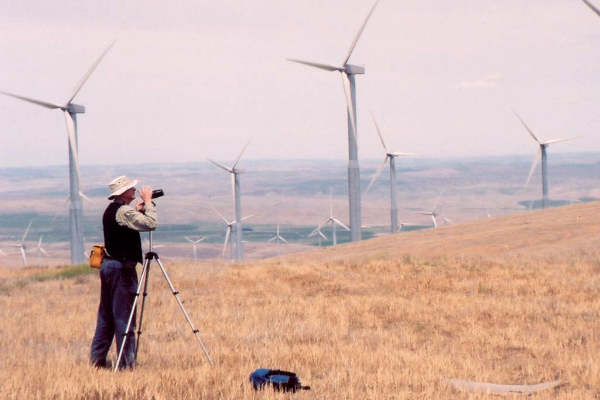
The following pages include some of the photos from my collection, including both digital and scanned images.
My photographs have appeared in Popular Science, Sierra, Solar Age, Alternative Sources of Energy, L’Espresso, Air & Space Smithsonian, Windpower Monthly, WindStats, Renewable Energy World, and other magazines, in several engineering and physics textbooks, on brochures and posters published by the National Renewable Energy Laboratory, by Friends of the Earth (UK), by the Union of Concerned Scientists, and the World Wildlife Fund.
